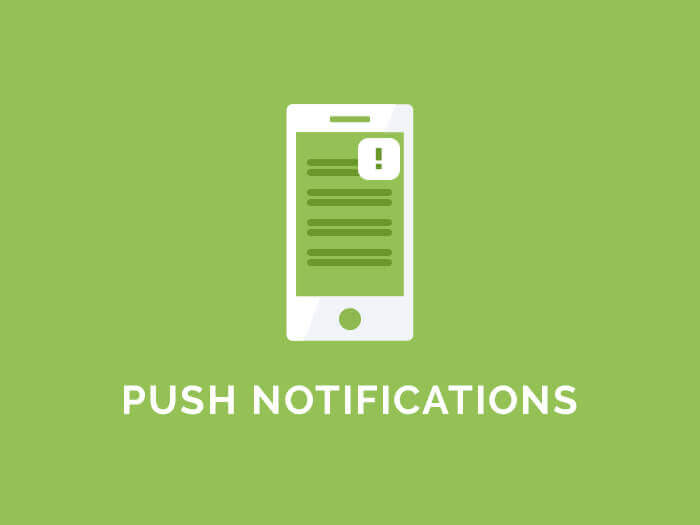

How many times do you look at your phone each day? And how many of those times are in reaction to that familiar ‘buzz’ letting you know that someone has a new profile picture on Facebook, or that your delivery is on its way?
If you’re like me, you disable the annoying ones because you don’t really need to know every time your auntie posts a new picture of her handbag-sized poodle. But for those other active vibrations, you probably pull out your phone to check with a tiny bit of excitement and wonder. It may be very tiny, because we’re so accustomed to it now, but admit it…it’s still there, right?
That’s because notifications work directly on our brains by activating the reward cycle. In marketing terms, push notifications act as a touchpoint—a way to engage and keep a dialogue going with users. I won’t get into the technical side of things, but it makes sense that app makers (perhaps like yourself) might want to get in on this, right? That’s why push notifications are one of the main reasons people decide to create a native app. So let’s dive in and see what they’re all about!
In the most basic terms, a mobile app push notification is a pop-up message, or alert, that an app publisher sends to your mobile device. Of course you’ll need to have their app installed, and also given permission for them to be able to send you these. Another type are mobile web notifications, which don’t require a mobile app to receive it. In this article we’ll focus on mobile app notifications.

An example of a push notification.
There are three main areas where push notifications come in useful for app publishers:
Ok, so these all sound like good ways to use push notifications, but you’re probably wondering ‘Where’s the proof?’
The most recent proof comes from a study done by Localytics at the end of 2015. Their findings revealed that the opt-in rate for push notifications is around 50% and, overall, push notifications do help increase user retention (so basically, they’ll keep using your app). This occurs only after they’ve spent some time with your app already though.

Another important thing to keep in mind is if you bombard users with push notifications (more than once a week it seems) then you’ll lose them for good. On top of that, these once a week notifications also need to be relevant to the user, which you can do via targeting and groups, which we talk more about below.
Now let’s take a look at the different types of push notifications you can send, specifically with app makers in mind.

| GoodBarber | AppMachine | Shoutem | Bizness Apps | |
|---|---|---|---|---|
| Immediate | Y | Y | Y | Y |
| Geolocation | Y | Y | N | Y |
| Automated | Y | N | Y | Y |
| Geofencing | Y (limit of 3) | N | N | Y (unlimited) |
| GoodBarber | AppMachine | Shoutem | Bizness Apps | |
|---|---|---|---|---|
| Operating System | Y | Y | Y | Y |
| Location | Y | Y | N (coming soon) | Y |
| User Groups | Y | Y | Y | Y |
| Subscriptions | Y (a.k.a. scheduled) | N | Y | Y |
As you can see, no two app makers are the same and it really depends on what kind of notifications you need for your app. In terms of options, GoodBarber and Bizness Apps seem to be ahead of the pack, with Shoutem and AppMachine just behind them. They also boast extra features such as GoodBarber’s automatic rating popup, or Bizness Apps rich notifications, which allow you send images along with message content.
But notifications alone do not make an app maker, and so I suggest you try out the ones that interest you first to see how you like the experience as a whole. You can find an overview of all our reviews here, as well as links to their free trials.
Remember, push notifications are not entirely useful in, and of, themselves. You need to tailor your messages so that your users get the best, most relevant, experience…or you’ll end up in that dark corner of the universe where all my auntie’s ‘dog dressed as santa’ notifications go.
What kind of experiences have you had with push notifications? Let us know in the comments below. Also feel free to ask us any questions you might have!